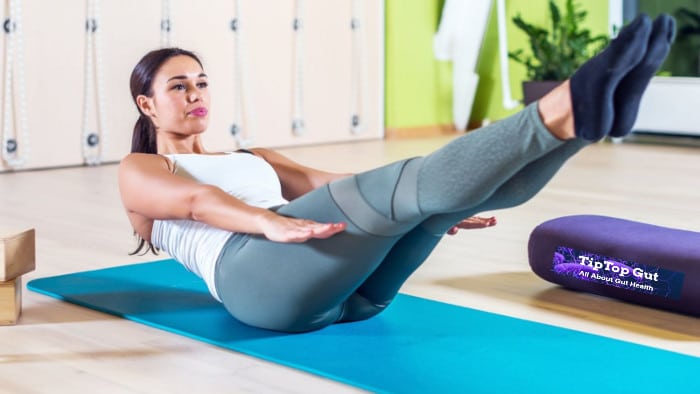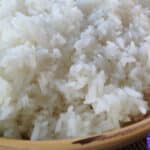Promoting healthy digestion isn’t a brand-new concept. It has been established the importance of gut health is connected to overall health, and probiotics play a crucial role in ensuring that the digestive system is in good shape. It is on the top of your list of priorities.
The bacteria in your gut control the digestive tract, your immune and digestive system, and your mental health, and that’s why it’s essential to ensure that they’re healthy. In addition to probiotics, you can exercise your gut to strengthen the gut’s community.
Check out this article to learn about the best exercises for gut health and digestion.
Does Exercise Help Your Hut Health?
Moderate exercise can improve the overall gut health of the average athlete. In some cases, it causes positive changes to intestinal bacteria metabolites that occur within intestinal tracts. That guarantees food moves quickly through your digestive tract. Biking can also aid in reducing the amount of water lost in your feces, which helps overall digestion.
Cycling also helps reduce total belly fat, which aids in creating a more effective digestive system, resulting in more regular bowel movements, less bloating, and increased overall energy. Yoga is a fantastic workout for the mind, body, and soul. It’s an excellent approach to improving your mind-body balance. A variety of positions can aid digestion. Downward dog, boat, child’s position, upward dog, and triangle have all been shown.
Opt for Workout that is Low-Intensity and Has Low Impact!
If the digestive health tract is one of your primary health goals or you’re experiencing GI issues, consider adding easy-on-the-body methods to your exercise routine. Why?
High-intensity circuits aren’t just putting stress on your quads, the quads as well as hamstrings. They’re difficult on your stomach.
“During a high-intensity workout, on a mechanical level, blood flow is shifted from your digestive tract to your muscles to power you through.”
“Traditional strengthening exercises are suitable for various reasons, with gut health being just one. “
If you’re experiencing slow digestion, it’s an ongoing issue for you. An exercise program that is low intensity in conjunction with your favorite probiotic to aid digestion can help get things moving.
“Low-intensity exercises can positively affect the stomach by reducing the transient time for stool, i.e., aid in passing irregular bowel movements faster than if you’re sedentary.
Instead of performing heart-pounding exercises for an hour, consider lifting unhealthy weight gain at your own pace. Bonus points if you can get out in nature, a known stress reliever.
But Don’t Skip HIIT Entirely
Alongside the increase in energy and mood, exercise with high intensity can also bring massive digestive health benefits, which are absent any digestive tract problems.
A heart-pounding set of squats, box jumps, and burpees could cause inflammation, which is why high-intensity HIIT can be an issue for people suffering from digestive system issues. However, even if you’re already taking a good probiotic, a minor inflammation may be beneficial.
Optimal Digestion
All-around great workout for your mind, body, and soul. It is an effective way to establish better mind-body balance and overall coordination. Through various poses, digestion can also be improved. Poses like downward dog, boat, child’s pose, upward dog, and triangle have all been proved to aim for optimal digestion.
When done correctly and over time, these poses can increase core strength and help relax the abdomen muscles, leading to better gut health. There are direct ties between practicing Yoga and the reduction in symptoms caused by acid reflux, bloating, and stress, which is another significant factor in gut health.
Gut Microbiome
The research is detailed: If you want to boost your immune system, you must keep your gut healthy. The science on this is irrefutable, which means we’re all about to take a gut-first approach to wellness. Bring mindfulness into your workouts—no matter how you exercise. To recap, we’re supposed to dial down the intensity (but not wholly stop exercising) and sometimes still do HIIT (just not too much).
Additionally, regular exercise is essential to improve blood circulation in the body and helps stimulate and energize your nervous, muscular, and endocrine systems. Below are some details on the impact of regular exercise on digestive health.
Healthy gut macrobiotics will help you maintain a proper digestive tract. Since much of the immune system is within the digestive system, your overall well-being starts from the gut, making the gut microbiome worth considering. A good diet and effective workout will keep the gut microbiome healthy.
Be Mindful When You Do Exercise!
In short, you’ll need to lower the intensity (but not completely stop working out). However, it is recommended to engage in HIIT periodically (just not excessively). How do you translate this into an entire week of training?
Goldilocks of workout routines is for people who want to improve their digestive health. It requires two days of intense training, two days of Yoga, and an extended hike over weekends. Include an over-the-counter probiotic supplement in your diet to ensure the digestive system and your back.
“Make sure you enjoy your workouts instead of dreading them because stress can cause GI issues.”
It is then possible to include mindfulness into your exercise routine to help determine if your workout is efficient and if your body is prepared for more days of rigorous exercise.
Focusing on digestive health and fitness lies in maintaining a positive mindset.
Exercises for Your Gut health and Digestive System
The research results have revealed that cardio exercise isn’t only beneficial for your heart and can also boost the gut flora. Researchers established that exercise can improve your digestive health by monitoring the diet, exercise routine, and the bacteria strains in stool samples.
People with the most excellent cardiovascular fitness had more Firmicutes in their stomachs. They are particularly effective in the prevention of stomach ulcers that leak.
The condition is caused by food allergy, stress, and inflammation. The condition causes tiny holes in the wall of the intestinal. Food particles are not digested; other harmful particles may traverse your intestine’s walls and enter your bloodstream. You may also read about ‘What Are the Symptoms of Tomato Intolerance? Interesting Facts 2022′.
The danger in this lies due to the particles that pass through blood vessels, triggering an adverse immune response and the onset of inflammation. Chronic inflammation could lead to various illnesses, including diabetes, Alzheimer’s, and autoimmune diseases.
Following six weeks of vigorous exercise, people who suffer from frequent digestive system problems discovered that they had different bacteria in their gut. They also appeared to have higher levels of fatty acids due to more beneficial bacteria.
Fatty acids are crucial for reducing inflammation and protecting against diseases like heart disease and diabetes. Studies have also revealed that the bacteria community shifted in the event of a person’s sedentary lifestyle.
It’s crucial to understand that having a routine of exercise is essential for digestive health. The environment of your gut can alter depending on your lifestyle and diet as well as reverting to a routine that is not active could negate any benefit the exercise brought.
As well as improving the health of your gut, exercising regularly helps reduce the risk of becoming obese and helps reduce your unhealthy weight gain.
Read More:
Best Probiotic for Gut Health and Weight Loss: An Ultimate Guide 2022
The Best Exercises for Gut Health and Digestion
When picking exercises to improve your digestion, there is no way to miss out on cardiovascular workouts. Additionally, specific exercises boost digestion health and help eliminate excess belly fat.
Eliminating belly fat is crucial for your gut’s bacterial community since fat is a cause of inflammation. Inflammation may affect gut health and create an imbalance in your microbiome, leading to more frequent health issues.
The most effective exercises for your gut, in and out The best exercises for your gut are listed below.
#1. Brisk Walking
Walking is an essential thing to try. Walking fast is a moderate-intensity aerobic activity. It is a Cardiovascular exercise; it boosts Firmicutes as well. Don’t forget to allocate an hour or more of your daily routine to go for brisk walks in the mornings or evenings. This can reduce the chance of colon cancer and aid in stool flow through the colon by encouraging irregular bowel movements.
Furthermore, walking after eating assists digestion by speeding up the rate of food moving from the stomach to the small intestine, consequently increasing the amount of satisfaction. In general, the speed at which you can walk is 4.5 miles per hour.
If you weigh 70 kg, you’ll burn 480 calories at a 4.5 pace and 250 calories at 3.5mph. Why shouldn’t you stroll after eating? For some people, walking after eating has adverse effects as well. It could feel like you have an upset stomach, gas and bloating, nausea, or nausea. Follow the steps listed below.
- Begin slowly and gradually to get warm.
- Relax your shoulders.
- Keep an upright back.
- From heel, move forward.
- Gradually incorporate hills into your routes. Gradually include hills into yours.
- Slowly warm down.
Let’s take a look at the fundamental exercises.
The best core exercises to improve gut and digestive health
Included are abdominal muscles, sit-ups, and planks. Since they are deep and challenging exercises, you need assistance from an experienced personal trainer to complete these exercises correctly, especially to avoid injury.

#2. Crunches
The most well-known classical core exercises strengthen the belly, focusing on the oblique and rectus muscles. It is thought to be among the most effective exercises to improve digestive health. You can perform a basic crunch in the following manner. You can attempt cycling crunch as well.
- Position of starting – Lay on the floor. Maintain your feet wide apart.
- Put your arms in a cross over your chest. Engage your abs and take your breath.
- Blowing out. Then, only lift the upper part of your body while keeping your neck and head relaxed.
Note Begin slowly. The neck and head must be at ease. In the wrong situation, they could result in injuries. Be careful when lifting your upper back. You must keep your hands crossed across the chest if you’re not confident. In the event of a fall, it could cause neck strain. Put your hands behind your head when you’re a professional. Avoid crunches since they can be possibly dangerous for the elderly.
Furthermore, twist crunch, Kick crunch, and hollow abdominal muscles are three exercises you can perform to build your abdominal muscles. They will help you decrease irregular bowel movements and avoid gas and bloating. They are as well as helping reduce inflammation through the elimination of belly fat.
More secure alternatives to crunches
Since basic crunches can cause risks of injuries and strains, Try using safer alternatives. They are much easier than a standard or bicycle crunch, as they create minor strain and injury if you do them correctly. Check out the selection below.
- Supine toe tap
- Bird dog
- Mountain Climber
- Rotation of the side-planks
#3. Cycling
Cycling is among the most effective ways to improve your digestive health. It’s an excellent cardio workout many kids will want to participate in. Based on a study that is primarily used for overweight or obese women. It is found that cycling is connected with better gut microbiome health and the improvement of overall gut health.
Cycling exercises have increased the number of friendly bacteria that live in your gut, and simultaneously, they have reduced the harmful bacteria. This will reduce belly fat, strengthen bowel movements, aids in the prevention of gas and gas, and improve the gut microbiome of your gut. Consequently, this will result in better digestion.
Furthermore, is cycling beneficial to help constipation? Yes. Cycling can help prevent constipation. Are you aware of times when you felt constipated following a bike journey? Note that there is a possibility of experiencing stomach cramps, indigestion, nausea, flatulence, and bloating following a ride.

#4. Strength Training
This can help by increasing intestinal motility and getting rid of waste through regular movements of your digestive tract if you suffer from digestive stress because of constipation or other issues. A low-impact workout and strength training can help you the greatest. Additionally, it can assist you in getting an increase in your cardio.
Pelvic floor activation
This is one of the most effective exercises for improving your gut health. It can be highly beneficial for women and men with bowel movements problems and other disorders related to the urination process. As time passes, it will cause a tightening of your pelvic floor.
In this scenario, you could be tempted to pretend you’re urinating and securing it. It will be helpful for bladder control and stool movements. Use the guidelines daily to ensure you’re doing it right. Begin by emptying your bladder.
- Intensify the muscles on your right side and hold them for ten repetitions.
- Relax your muscles for 10 seconds
- Do it ten times in total.
- Breathe slowly out of your mouth and nose as you relax and tighten.
#5. Yoga
You are all aware that Yoga is a well-known exercise that concentrates on the mind and body. Note It is generally accepted that Yoga is safe. However, if you’re suffering from pregnancy, high blood pressure, and neck or back injuries, it is recommended to stay clear of Yoga. Try these Yoga poses to improve the health of your gut by getting rid of bloating and enhancing digestion.
- Simple Yoga stretching to improve digestive health: Seated twist Supine spine bent, Seated Forward Seated side bends, Head to knee and Bellows pose
- The best way to improve the digestive system at night is through Yoga. Gentle Yoga, with low-intensity twists
- Does gentle Yoga pose help digestion after eating a large dinner? Seated Cat-Cow Garland position, Leg-binding position Pose to relieve wind, reclined Cobler’s posture. What happens when we practice Yoga following a meal? It will help your digestion to improve, especially when you’ve overeaten.
- Yoga to ease constipation Half-Spinal twist, Supine spinal twist, Cobra pose, Crescent Lunge twist, wind relieving pose, Bow pose, Adamant pose, legs up the wall.
- You can perform an all-level exercise focusing on the ‘Asana’ posture, which will also assist you in detoxifying your gut.
It is generally advised to practice Yoga at the beginning of your day on an empty stomach. But, given the hectic schedule, you have to face today, you might not have time for it.
If you cannot participate during the early morning hours, it is best to do it to go to bed in the evening before eating. Do not eat immediately after Yoga. Allow your body to rest for around 30 minutes before eating food.
#6. Breathing Exercises
Deep breathing or breathing with your stomach is yet another easy exercise that can help you to remain calm and alert. This can ease your digestive tract and help ensure regular bowel movements. It is a well-practiced treatment for gastrointestinal disorders (GI) patients.
Abdominal Muscles
Does breathing cause bloat? You might sometimes experience abdominal pain, bloating, and excessive belching and burping due to excessive breaths in your mouth. Follow the steps in the following paragraphs.
- First, locate an area that is quiet and without disturbances.
- Relax or lay on the floor.
- Put the palm of your hand over your chest while placing the other on your belly.
- The bottom hand can be moved. You can move the opposite hand, but only with the hand on the bottom remaining still or moving.
- Inhale through your nose for about 4 seconds while focusing on your abs.
- Keep your breath in for 2 seconds.
- Inhale slowly and gradually through your mouth for approximately 6 minutes. The mouth should remain calm and relaxed.
- Repeat five to fifteen minutes.
It is possible to try breathing exercises to improve your digestive health, particularly when you are experiencing symptoms of Irritable Bowel Syndrome (IBS). While doing the exercises, remember to pay attention to the breath and ensure they are slow and steady.
There isn’t a perfect method. It is possible to practice it in a way that feels comfortable to you—furthermore, exercising proper nostril breathing assists in increasing the effectiveness of the digestive system. This should be done only in the presence of an experienced Yoga professional. You can get rid of Irritable Bowel Syndrome through this exercise.

#7. Tai-Chi
Practice for the mind and body is Yoga. It is an exercise with moderate intensity. It’s a little effort, a considerable gain. It is easy to begin with, Tai Chi at a low cost because no costly equipment is required.
It is best when you start before you are afflicted with any chronic illness of any kind. Tai Chi can benefit you by strengthening your Abs strength and enhancing digestive system functions, decreasing inflammation or stress. Tai Chi could comprise the following.
- First, warm-up
- Short forms – including one or fewer moves
- Long forms – including hundreds of moves
Note Beginning with shorter forms of slower and smaller movements, especially if you’re older or are not in good shape.
Qigong: Try just a few minutes of relaxed breathing, followed by standing or sitting exercises.
#8. Aerobic Exercises
Recent studies suggest aerobic exercise can affect gut health by increasing the microbiome’s diversity. Aerobic exercise can help improve cardiovascular fitness by regulating the quantity of oxygen the muscles utilize. Be cautious when doing aerobics.
Start by warming up properly before cooling down, then perform stretching exercises. You can try out Lower impact aerobics and aerobics with a higher impact based on your age and physical condition.
Note Carefully avoid any intense aerobic exercise like
- kickboxing,
- cycling
- jogging,
- running,
- dancing, etc.
Because they can cause stomach discomfort and because they could cause pain. The best digestion exercises to improve digestive health after eating.
Best Time to Do Exercise to Improve Gut Health and Digestion
It is a frequent issue that is asked what time you should take to do your exercise following a meal. In general, waiting until the food has been digested completely is unnecessary.
It typically takes 2 to 4 hours for food to be moved from the stomach into the small intestine, where absorption begins. Giving enough time for food to settle within your stomach is essential. A minimum of 1-2 hours is enough for a light meal, and 30 minutes are enough to eat a snack.
What happens, then? What happens if you exercise after eating? Note: There are also potential side effects. Exercising before eating could have adverse effects due to nausea, bloating, and vomiting. The severity is related to the amount of exercise you’re engaging in.
Exercises Combos Involving Different Exercises for Gut Health
In the end, simple movements will allow you to improve your digestive health. Try them out after an eating or a small dinner. Note be careful to perform them in a controlled and controlled way.
Take about 30 minutes following a large meal before you begin.
Exercise 1 for Gut Health
It is possible to begin by stretching exercises that aid the digestive system when you eat. By doing them this way, you’ll find that the peristalsis process will be improved, your abs will be massaged, and you’ll experience less gastric bloating.
- On a towel or an exercise mat
- Your hands and knees should be placed directly underneath your hips and shoulders. Make sure your spine is straight.
- Stretch your right arm, line your shoulders up, and your left leg towards your hips. Keep your eyes on the straight line.
- Maintain the position for one second.
- Slowly return to your starting point.
- Drop your tailbone and head. Then, your back will be bent as if the belt suspended you.
- Keep this up for one second.
- Repeat the process ten times in the same arm and leg.
- Refresh and repeat on the other side too.
Exercise 2 for Gut Health
- Switch sides and lay mat back.
- Make sure both knees are bent towards your chest and hold them.
- Keep it for a few seconds.
- When hugging a leg, stretch the other leg straight.
- Then, draw the straight leg and repeat the process for the other leg.
- Ten times repeat.
- Note: Keep your shoulders and head on the floor.
Exercise 3 for Gut Health
Finally,
- Lay down gently.
- Slowly move your arms from moving from side to upwards, passing the head. Maintain your arms on the floor all through.
- You should stretch your body as far as you can.
- Ten to 20 seconds of hold. This will assist you in attempting to ease any tension within the stomach.
Read More:
How to Get Better Gut Health? An Ultimate Guide 2022
Best Vitamin for Gut Health: 7 Best Vitamins for Digestion
Gut Biome and Mental Health: The Easiest Explanation (2022)
What Are the Symptoms of Tomato Intolerance? Interesting Facts 2022
Best Probiotic for Vaginal and Gut Health: The Best Guide 2022
Sources and References
At TipTop Gut, we rely on peer-reviewed studies, academic research institutions, and medical associations. We avoid using tertiary references.
- Bilski J, et al. (2016). Can exercise affect the course of inflammatory bowel disease? Experimental and clinical evidence. DOI:
10.1016/j.pharep.2016.04.009 - Jan Bilski, Agnieszka Mazur-Bialy, Bartosz Brzozowski, Marcin Magierowski, Janina Zahradnik-Bilska, Dagmara Wójcik, Katarzyna Magierowska, Slawomir Kwiecien, Tomasz Mach, Tomasz Brzozowski,
Can exercise affect the course of inflammatory bowel disease? Experimental and clinical evidence,
Pharmacological Reports,
Volume 68, Issue 4, 2016, Pages 827-836, ISSN 1734-1140,
https://doi.org/10.1016/j.pharep.2016.04.009.
(https://www.sciencedirect.com/science/article/pii/S1734114016300275) - Digestive health tips. (n.d.).
patients.gi.org/topics/digestive-health-tips/ - Mayo Clinic Staff. (2019). Walking: Trim your waistline, improve your health.
mayoclinic.org/healthy-lifestyle/fitness/in-depth/walking/art-20046261 - Physical activity and GI health. (2012).
badgut.org/information-centre/a-z-digestive-topics/physical-activity-and-gi-health/ - Relaxation techniques: Breath control helps quell errant stress response. (2018).
health.harvard.edu/mind-and-mood/relaxation-techniques-breath-control-helps-quell-errant-stress-response - Tai chi and qi gong: In depth. (2018).
nccih.nih.gov/health/taichi/introduction.htm - Yoga: In depth. (2018).
nccih.nih.gov/health/yoga/introduction.htm

















